It’s always a good time to talk about how to best clean your phone and gadgets. But especially this time of year. With cold and flu season now meeting Covid-is-back season (again, sigh) it’s important to know how to safely clean your phone, or disinfect it entirely. Also, your kids’ phones, of course. Because while it’s important to know the best way to wash your hands, it’s a little counterproductive to to dry off those newly clean hands, only pick up a germy phone and start tapping on that phone screen, let alone pressing it up against your face.
– Updated for 2023 –
It’s important to remember that Covid-19 itself is not likely to be able to live on metal surfaces for more than a few hours despite what was once believed — though it may be a little longer for plastic (16 hours per the NiH), and that includes phone cases. And while the Mayo Clinic reminds us that cold, flu, and other viruses are most easily caught through close contact with an infected person, it is possible to get sick from a germy surface that has been touched fairly recently.
So really, knowing how to clean your devices is about preparing, not panicking.
But Covid aside, with the knowledge that a cell phone can be10 times dirtier than your toilet seat (and that’s not counting kids’ phones), it’s good to have some phone-cleaning supplies and disinfectant techniques available any time of year at all.
Tips and Methods for Cleaning and Disinfecting Your Phone: From Light Cleaning to the Serious Stuff
This post contains affiliate links and some purchases may support our team at no additional cost to you. All recommendations are selected independently by our editorial team featuring brands we’ve used and we trust.
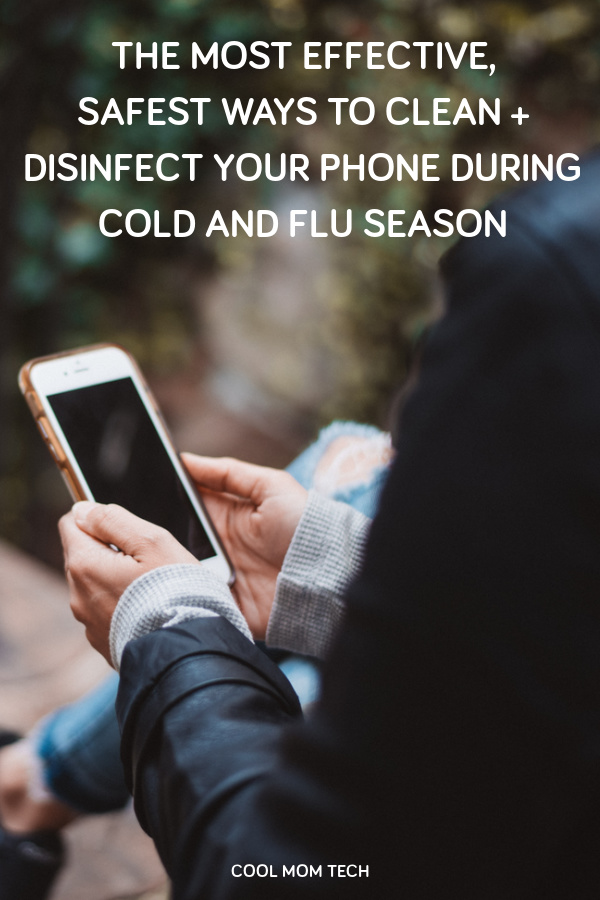
For a quick clean: Clean your phone screen with a soft microfiber cloth
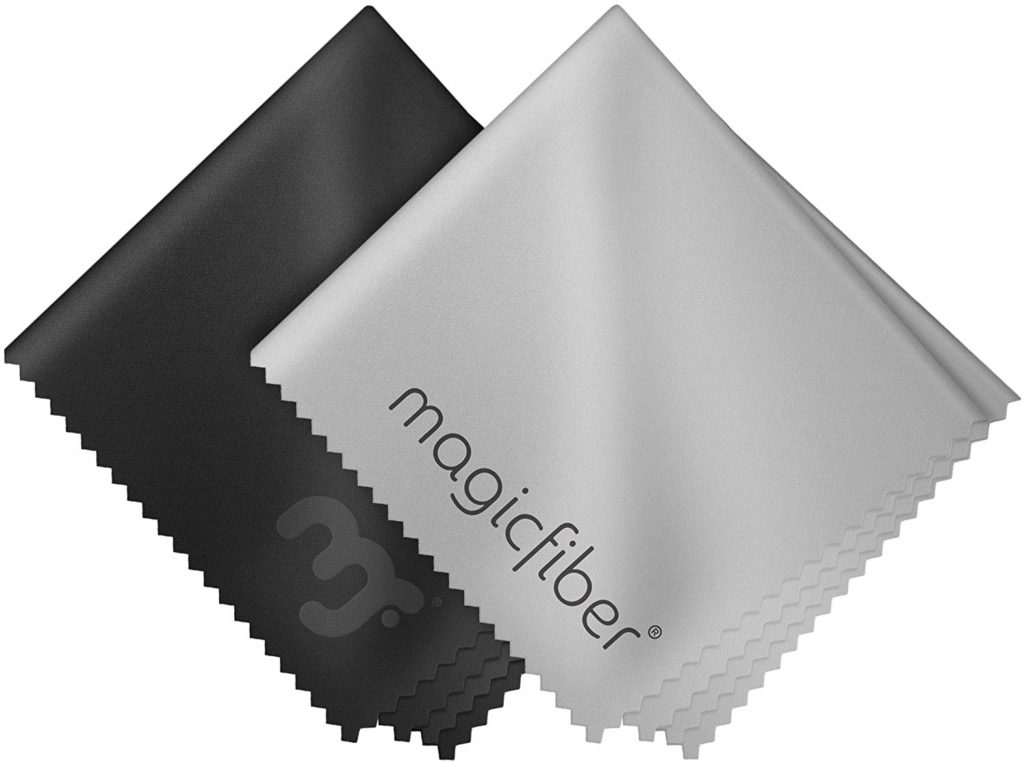
For the best way to clean your phone, I like carrying soft, lint-free, microfiber cloths for my devices. They’re affordable, reusable, and come in convenient multipacks so that you can hand them out to the kids. Stash extras around the house or in the car; you really can’t have too many.
You can also consider a thin microfiber lens cloth like the ones shown above from MagicFiber. You may even have them around the house already, free with eyeglass purchases but can’t hurt to have more. Both options are washable, making them an eco-friendly choice as well.
Bonus: If you’re really worried about germs, you can whip out your cloth to wipe down ATM screens or those screens at retail check-out that you have to sign with your finger.
For a more effective clean: Clean your phone screen with warm, slightly soapy water
If you need to get something sticky off your phone (I see you, parents!) and a quick wipe-down with a cloth isn’t working, you can go to the next step. According to Apple, the easiest way to clean your phone requires nothing more than a microfiber cloth or the kind of cloth that comes with your eyeglasses (as shown above) — plus some soapy water. It should be slightly damp, not soaked through. And don’t use dish soap which is a lot more concentrated and a lot more sudsy; a drop of whatever you wash your hands with should be fine.
If you’re still using an older model phone that isn’t waterproof, avoid getting the ports wet. If you have an iPhone 11 or newer, a Galaxy Note 10 or newer, or any Samsung Galaxy after 2016, not much to worry about.
For wiping away germs: Clean your phone screen with wipes or sprays made for electronics
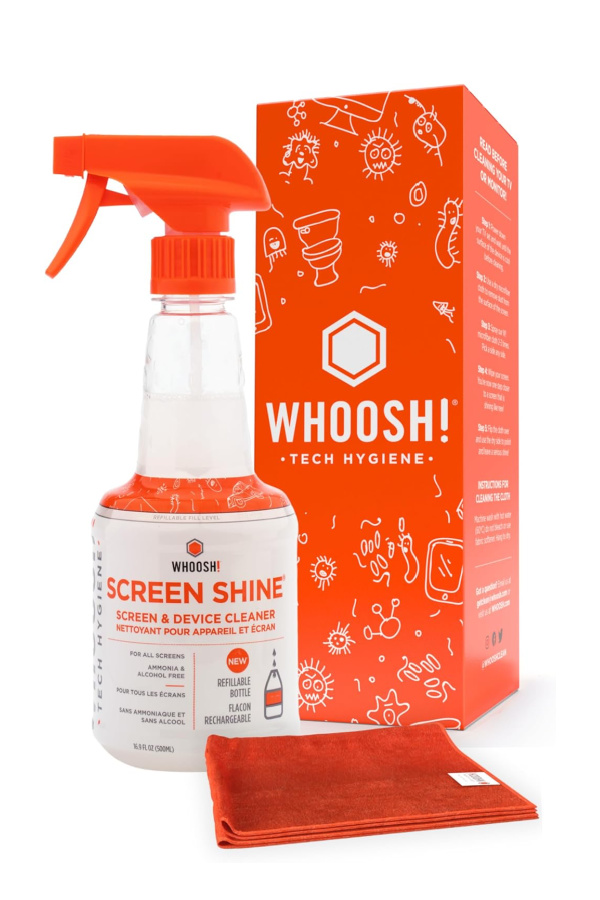 I’m surprised how many tech articles recommend using regular old household disinfectant sprays or bleach wipes, considering how many phone manufacturers recommend against them; mainly because of how damp sprays can get your devices, and how they compromise some touch screens — and I’ve read a few horror stories from users after trying them out.
I’m surprised how many tech articles recommend using regular old household disinfectant sprays or bleach wipes, considering how many phone manufacturers recommend against them; mainly because of how damp sprays can get your devices, and how they compromise some touch screens — and I’ve read a few horror stories from users after trying them out.
Apple’s most recent recommendations: You can use a 70 percent isopropyl alcohol wipe, 75 percent ethyl alcohol wipe, or Clorox Disinfecting Wipes to gently wipe the exterior surfaces of your iPhone. Avoid products containing bleach or hydrogen peroxide, and definitely don’t submerge your phone in any cleaning agents.
You definitely want a product that’s designed to be gentle on your pricy devices and here are a couple I like:
Option 1:
For the best way to clean your phone safely and make it shine, I remain the biggest fan of Whoosh! Screen Cleaning spray, which is portable, and comes with a reusable microfiber cloth that I also love. It claims to eliminate 99.9% of “dust, dirt, oil and gunk” from your screen, so while it’s not antibacterial, it will keep it clean. They also offer a new Whoosh! 2.0 Refillable Screen Cleaner Set (shown above) that you can put to use on your computer monitors and TV screens too.
There are other brands, but I really haven’t found one that’s better.
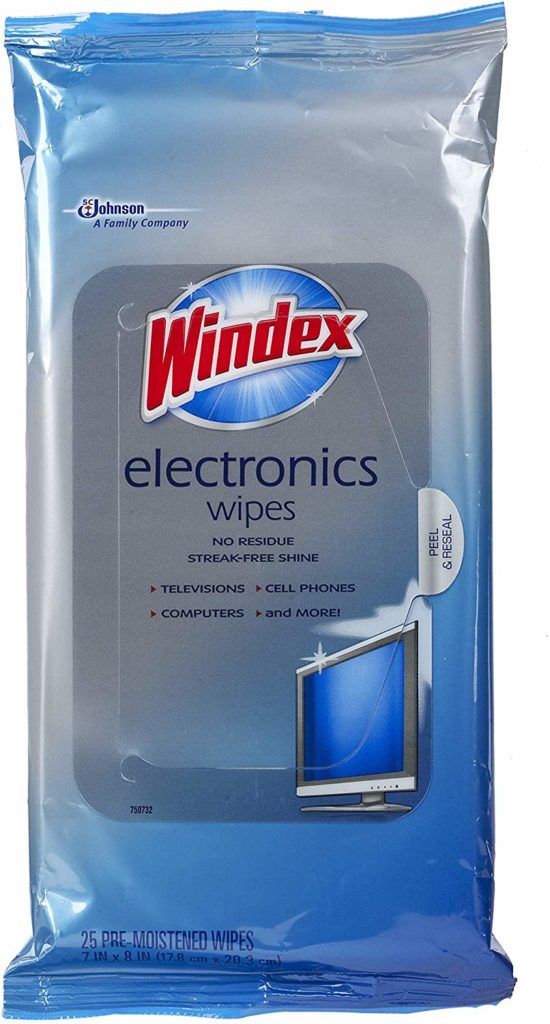
Option 2:
While not as eco-friendly as a reusable cloth option, I have long been a fan of Windex Electronic Wipes, which you can use safely on most gadget screens. Find multipacks on Amazon, or you can grab them at most supermarkets and hardware stores. These wipes really do work well! The active ingredient in each of these products is Ethanol, or simple alcohol. The CDC notes that alcohol doesn’t kill germs, but removes them, which lowers the risk of transferring them from your gadget to your fingers.
For wiping away germs and disinfecting: Clean your phone screen with household cleansing wipes that contain ammonia and alcohol
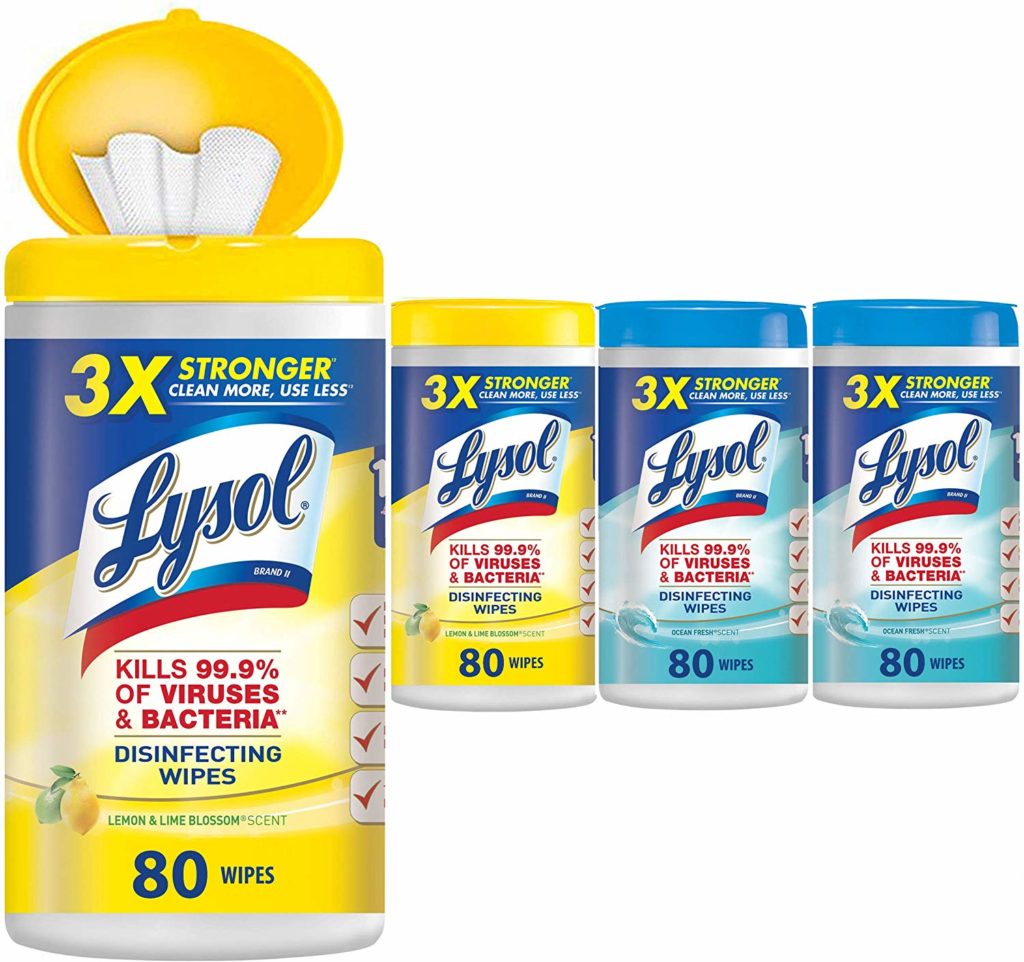 Since first publishing this post during the beginning of the pandemic, Apple has updated their how to clean your devices FAQ page (WTG Apple!) with a very clear message: they now suggest that it is fine to use a household disinfectant wipe, like Lysol wipes or Clorox wipes.
Since first publishing this post during the beginning of the pandemic, Apple has updated their how to clean your devices FAQ page (WTG Apple!) with a very clear message: they now suggest that it is fine to use a household disinfectant wipe, like Lysol wipes or Clorox wipes.
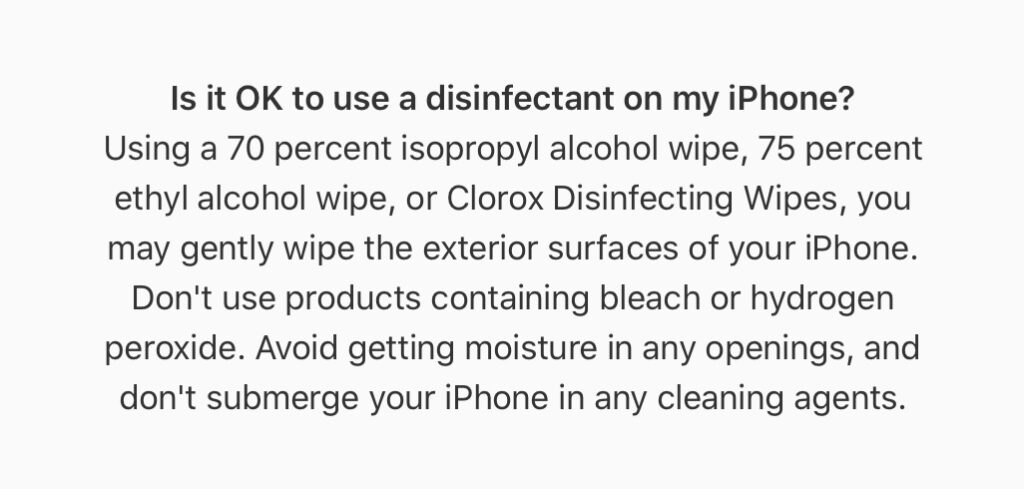 The active ingredients in each of these is a combination of isopropyl alcohol, and alkyl dimethyl benzyl ammonium chloride.
The active ingredients in each of these is a combination of isopropyl alcohol, and alkyl dimethyl benzyl ammonium chloride.
Isopropyl alcohol can be a slightly better choice than ethyl alcohol because it evaporates more quickly and doesn’t leave oil behind. Alkyl dimethyl benzyl ammonium chloride (benzalkonium chloride) is an ammonia compound which is both a surfactant and a disinfectant. So unlike the electronic wipes above, these products do infect disinfect your devices.
Note that these wipes do not contain bleach! The name Clorox may make you think of bleach, but the wipes are not made with Clorox bleach. Please don’t substitute a DIY bleach solution or any wipes containing bleach on your phone!
What about natural wipes?
You may generally prefer a “natural wipe” around your home like 7th Generation disinfectant wipes, in which the active ingredient is Thymol, a botanical derivative of Thyme. I’ve been trying to find resources that indicate whether it’s as effective as a product like Clorox wipes on killing Covid; it seems that it’s “effective in killing 99.9% of household germs including cold and flu viruses,” but 7th Generation only claims it kills viruses “similar” to Coronavirus on non-pours services.
So…I just personally can’t vouch for them comparatively and I’ve looked around a lot. Natural ingredients (Thymol, pine oil) are not mentioned in the Consumer Reports article about products that kill Coronavirus if that’s a concern.
For sterilizing and disinfecting: Clean your phone with a UV phone sterilizer
Here’s where we start getting into the serious stuff when it comes to cleaning your phone. These options for sterilizing and disinfecting your phone will cost you more, but will get the microbe-killing job done.
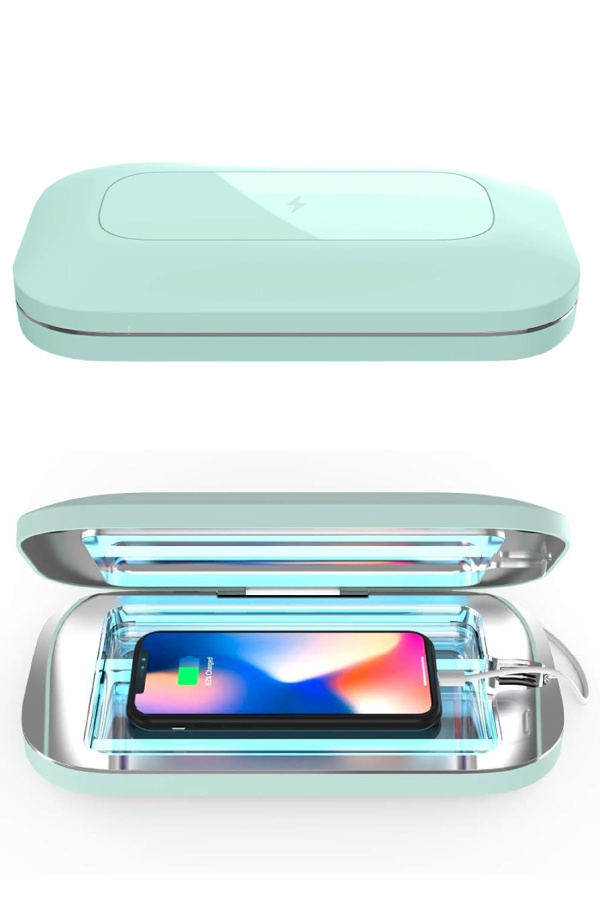 A new favorite is the PhoneSoap Pro UV Smartphone Sanitizer, which isn’t cheap but it’s a great investment. (To save a bit try the original PhoneSoap UV-C smartphone sanitizer that’s now fairly discounted since the great Cleaning Device Rush of 2020.) The PhoneSoap is an electronic device that look like a little isolation chamber for your phone. It works using UV-C bulbs that sanitize the entire phone, reportedly killing 99.99% of bacteria and germs. Plus it doubles as an attractive phone charger in lots of colors. Pop your phone in there each night before bed and let it clean (and charge) while you sleep — or if you want to use it on the go, try the wireless PhoneSoap UV Charger.
A new favorite is the PhoneSoap Pro UV Smartphone Sanitizer, which isn’t cheap but it’s a great investment. (To save a bit try the original PhoneSoap UV-C smartphone sanitizer that’s now fairly discounted since the great Cleaning Device Rush of 2020.) The PhoneSoap is an electronic device that look like a little isolation chamber for your phone. It works using UV-C bulbs that sanitize the entire phone, reportedly killing 99.99% of bacteria and germs. Plus it doubles as an attractive phone charger in lots of colors. Pop your phone in there each night before bed and let it clean (and charge) while you sleep — or if you want to use it on the go, try the wireless PhoneSoap UV Charger.
You can search Amazon and find a few more affordable no-name alternatives that work in similar ways, but I’d go with the trusted brand that gets expert recommendations over and over.
 While the PhoneSoap can accommodate all smartphones, obviously it won’t fit your tablets. If you’ve got larger gadgets — or lots of phones and gadgets to clean at once — definitely check out the HomeSoap UV Sanitizer. It’s like a giant UVC-light germ-destroying locker, that can fit tablets, phones, remote controls, gaming controllers, hand-held games like Nintendo Switch, headphones, AirPods and more. (Though probably not all at once.) It’s a little pricy, but a smart idea for families with lots of gadgets to clean and disinfect.
While the PhoneSoap can accommodate all smartphones, obviously it won’t fit your tablets. If you’ve got larger gadgets — or lots of phones and gadgets to clean at once — definitely check out the HomeSoap UV Sanitizer. It’s like a giant UVC-light germ-destroying locker, that can fit tablets, phones, remote controls, gaming controllers, hand-held games like Nintendo Switch, headphones, AirPods and more. (Though probably not all at once.) It’s a little pricy, but a smart idea for families with lots of gadgets to clean and disinfect.
For speedy sterilizing and disinfecting: Clean your phone with a UV-C wand

The great thing about using UV-C wands to clean your phone, is that they can clean microbes and bacteria really quickly, especially on smooth surfaces like phone screens. That makes them great for a quick swipe over your kids’ phones before they run out the door.
We first recommended the Verilux CleanWave UV-C sterilizing wand back in 2012 (!), and it still gets terrific ratings. I even still use mine. Wave it over your phone, tablet, keyboard, you name it, and it disinfects — at least until you pick it up again with your germy hands, ha. While it may be one of the best ways to clean your phone, note that it won’t get into crevices, like the buttons under your remote control or the cracks between your phone and case.It’s compact and not too expensive.
There are similar items from other brands that will save you a few bucks–I admit I’m laughing at the name The Germ Reaper, the UV Light Sanitizer from a company called Green Piece. But when it comes to cleaning, I tend to trust the brands that I’ve known a long time that stand behind their products. So basically, everything I’ve recommended here.
Top image: Chad Madden on Unsplash

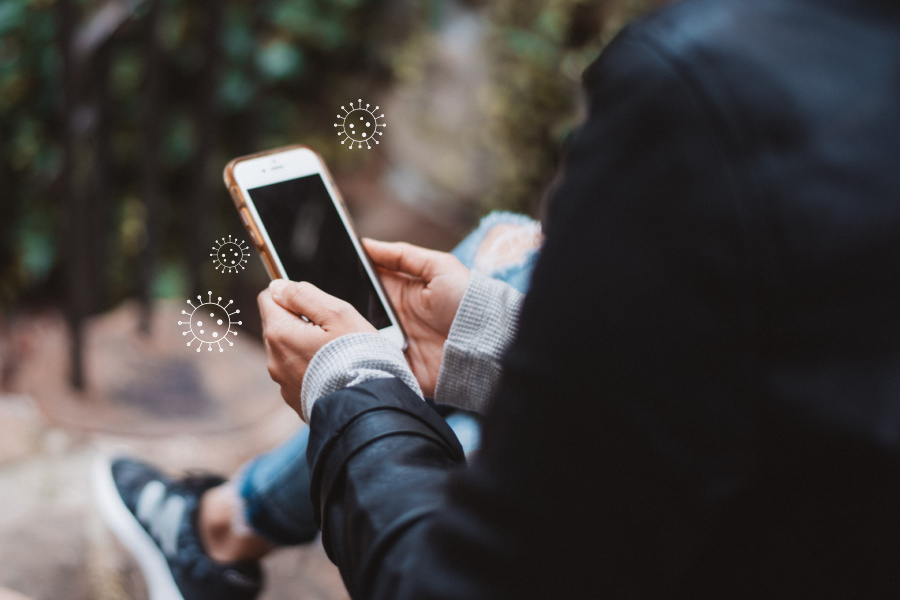
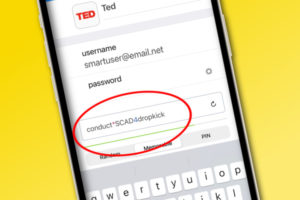
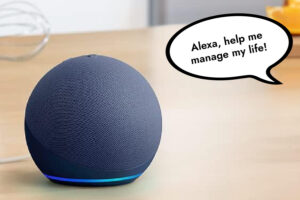

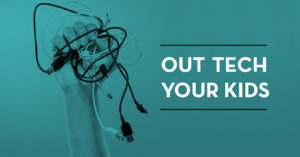
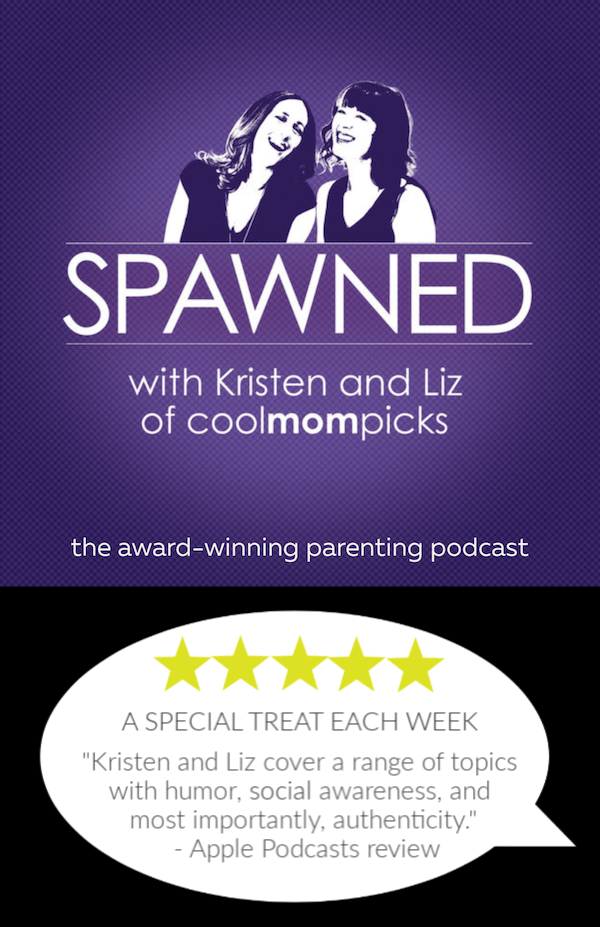
Hello, I’m afraid some crucial information in this article is inaccurate.
According to NIH, the new coronavirus — SARS-CoV-2 (which causes COVID-19) — can actually remain active on cardboard for 24 hours; on plastic and steel up to 3 days!
You can read more from the NIH here: https://www.nih.gov/news-events/news-releases/new-coronavirus-stable-hours-surfaces
—
ED RESPOPNSE:
Thanks for your comment. For anyone else reading, this info has been clarified by a lot of experts since this report. Good things to know, in this case from a professor of immunology at Yale and an infections disease epidemiologist at Harvard Med:
1. That test was done in controlled laboratory settings (no sunlight, wind, other factors that can deteriorate the virus, including time)
2. If the “virus was detectable” that doesn’t mean that it is viable, “or that contact with those surfaces would be able to infect someone.” The virus needs many other components to be intact.
3. Most importantly, “people are much more likely to be infected by close contact with an infected person than by touching a contaminated surface.” Still, the experts recommend the same thing we do: wash your hands after touching stuff.
https://www.theguardian.com/us-news/2020/mar/31/how-long-does-coronavirus-live-on-different-surfaces
Also, on the topic of UV sanitization and sanitizing wands: I’d be hesitant to trust them against this SARS-CoV-2/COVID-19 pandemic. This blog post from a company in the UV sanitization field discusses coronavirus disinfection in terms of *45 minutes to one hour* of UV-C!
[link removed]
—-
Ed response:
You can rest assured our team researches what we write about before we recommend it. That’s why we’ve earned reader trust for 14 years. Here are some articles featuring scientific/medical experts about UVC light.
“Sanitizing wands allow you to wave UVC light over anything you might want to disinfect, including counters, bedding, and steering wheels. The wands can be used anywhere, claim to work within seconds, and are often marketed to travelers concerned about things like hotel room sanitation. A 2014 study tested the efficacy of these portable wands and found that they killed 100% of commonly-found bacteria within five seconds and inactivated 90% of spore-forming bacteria, which are harder to kill, within 40 seconds. “
https://www.insider.com/does-uv-light-kill-germs
From microbiologist Alex Berezow: “UV light is lethal to bacteria and viruses because of its high frequency that scrambles and damages their nuclear material. When it damages the DNA (or RNA) code of these pathogens, it also triggers lethal mutations that prevent them from reproducing properly…UV light kills everything: bacteria, fungi, viruses. It should kill coronavirus.”
https://nymag.com/strategist/article/does-uv-light-kill-germs-best-sterilizer.html
Many EMS units are using UVC light to disinfect ambulances.
https://www.wkrg.com/health/coronavirus/mfrd-begins-using-uvc-lights-to-further-sanitize-ambulances/
https://www.reporterherald.com/2020/03/31/coronavirus-thompson-valley-ems-uses-ultraviolet-light-to-disinfect-ambulances-due-to-covid-19/
“Though there hasn’t been any research looking at how UVC affects Covid-19 specifically, studies have shown that it can be used against other coronaviruses, such as Sars. The radiation warps the structure of their genetic material and prevents the viral particles from making more copies of themselves.”
“A concentrated form of UVC is now on the front line in the fight against Covid-19. In China, whole buses are being lit up by the ghostly blue light each night, while squat, UVC-emitting robots have been cleaning floors in hospitals. Banks have even been using the light to disinfect their money.”
https://www.bbc.com/future/article/20200327-can-you-kill-coronavirus-with-uv-light